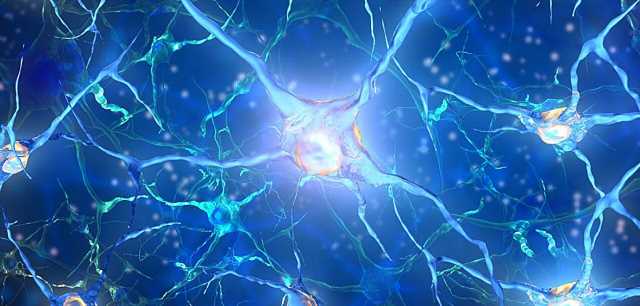
Researchers from the Nuffield Department of Clinical Neurosciences at the University of Oxford, along with colleagues at Cambridge University and Barts and the London School of Medicine and Dentistry, have shown the potential of a new gene therapy approach to silence human sensory neurons (nerve cells) as a means of treating persistent pain. Many current drugs for chronic pain are highly addictive, which makes it important to discover new alternatives.
The paper, “A humanized chemogenetic system inhibits murine pain-related behavior and hyperactivity in human sensory neurons,” can be read in Science Translational Medicine.
Chemogenetics is a process where molecules that control the excitation (stimulation) of neurons are engineered so they only become active in the presence of a non-toxic drug. This process has already shown promise as a means of suppressing such excitability in research involving animals.
Jimena Perez-Sanchez, a postdoctoral research scientist at the Nuffield Department of Clinical Neurosciences and joint author of the study with Steven Middleton, and her colleagues have now shown that there is a chemogenetic approach that is suitable for human applications.
First, the team expressed the gene PSAM4-GlyR, a chemogenetic system based on the human protein receptors nicotinic acetylcholine and glycine, in mouse sensory neurons. They activated PSAM4-GlyR with the clinically approved drug varenicline, which inhibited sensory neurons and also reduced the pain hypersensitivity normally associated with arthritis or nerve injury in mice.
Then, the researchers went on to activate the PSAM4-GlyR system in sensory neurons derived from a patient with erythromelalgia, a condition characterized by burning pain. They found that this inhibited the neurons and normalized hyperactivity.
David Bennett, Professor of Neurology and Neurobiology and Jimena Perez-Sanchez, postdoctoral research scientist at the Nuffield Department of Clinical Neurosciences, said, “The whole team are pleased to have shown the potential of a gene therapy approach for the treatment of chronic pain which remains one of the great unmet health needs. This has been achieved by switching off hyperactive nerve fibers. By targeting this initial component of the pain circuit we could avoid the addictive potential of existing pain killers such as opioids.”
Although further validation in human pain models is needed, the results demonstrate the contribution of sensory neuron hyperexcitability to persistent pain due to arthritis or injury to the nervous system. The researchers have shown the translational potential of engineering human protein receptors for the treatment of pain.
More information:
Jimena Perez-Sanchez et al, A humanized chemogenetic system inhibits murine pain-related behavior and hyperactivity in human sensory neurons, Science Translational Medicine (2023). DOI: 10.1126/scitranslmed.adh3839
Journal information:
Science Translational Medicine
Source: Read Full Article
